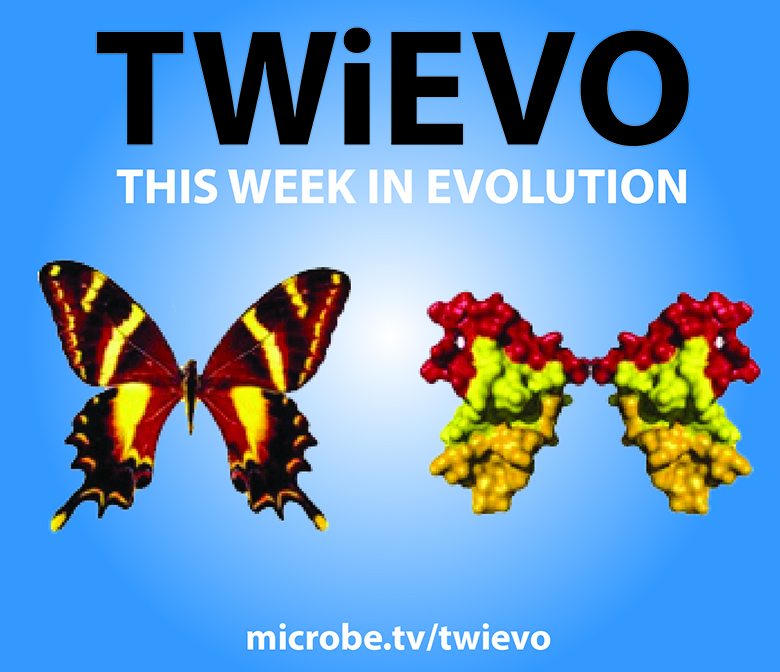Nels C. Elde
Professor of Human Genetics and Adjunct Professor Biological Sciences
Evolutionary Cell Biology, Virology, Microbiology, Genetics, Genome Science, Experimental Evolution

Molecular Biology Program
Education
B.A. Carleton College
Ph.D. University of Chicago
Research
We study the evolution of conflict. Host-pathogen interactions are hotspots of genetic conflict and battlefronts for influence over host functions. From an evolutionary perspective each interaction can weigh heavily on the survival of both hosts and pathogens. Therefore, these interactions drive some of the most dramatic adaptations and rapid evolution found in nature. We use host-pathogen interfaces as model systems for studying the evolutionary process.
A key evolutionary strategy is mimicry. Mimicry provides evolutionary gains in many situations; from rainforest butterflies disguised as poisonous species down to the molecular interface of host-pathogen interactions. Mimics encoded by viruses interfere with a variety of host functions. Our lab uses evolutionary and experimental approaches with diverse panels of primate cell lines to investigate host-mimic evolution. One example is the interaction between the anti-viral Protein kinase R and a mimic of its substrate encoded by poxviruses. These studies are revealing mechanisms of self-recognition at protein-protein interfaces and raising new questions about the evolutionary dynamics of mimicry.
Host-pathogen interfaces often evolve in ways that resemble arms races. This phenomenon of genetic conflict has been described by the Red Queen hypothesis, which posits that opposing entities vie for dominance in seesawing battles of ongoing adaptations. In the lab we use extensive phylogenetic analysis to identify and study molecular arms races involving host immunity factors and antagonistic proteins encoded by pathogens.
In addition to host evolution, we study the evolution of large DNA viruses, such as vaccinia, the model poxvirus. While experiments based on phylogenetic reconstructions provide a powerful means of retrospectively studying host-pathogen interactions, experimental evolution offers a prospective view of virus evolution where adaptations can be monitored in real-time. Recent advances in deep genome sequencing coupled with recombinant tools make possible to quickly determine the genetic basis of a variety of adaptations. We are using experimental evolution of vaccinia to decipher mechanisms of virus adaptation, such as host switching, which in the wild can lead to new epidemics.
Check out Nels’ science podcast This Week in Evolution!
References
-
Sasani TA*, Cone KR*, Quinlan AR**, Elde NC**. (2018) Long read sequencing reveals poxvirus evolution through rapid homogenization of gene arrays. (Under revision, eLife) bioRxiv doi: https://doi.org/10.1101/245373 **Equal contributions of senior authors.
-
Carey CM, Govande A, Cooper JM, Hartley MK, Kranzusch PJ, Elde NC. (2018) Recurrent loss-of-function mutations reveal costs to OAS1 antiviral activity in primates. (Under revision, Cell Host & Microbe) bioRxiv doi: https://doi.org/10.1101/326454
-
Barber MF, Lee E, Griffin H, Elde NC. (2017) Rapid evolution of primate type 2 immune response factors linked to asthma susceptibility. Genome Biology and Evolution, 9: 1757-65.
-
Cone KR, Kronenberg ZN, Yandell M, Elde NC (2017) Emergence of a viral RNA polymerase variant during gene copy number amplification promotes rapid evolution of vaccinia virus. Journal of Virology, 91: e01428.
-
Chuong EB, Elde NC, Feschotte C (2017) Regulatory activities of transposable elements: from conflicts to benefits. Nature Reviews Genetics, 18: 71-86.
-
Yaxin Y, Yarrington RM, Chuong EB, Elde NC, Stillman DJ (2016) Disruption of promoter memory by a long noncoding RNA. Proc Natl Acad Sci U S A., 113: 9575-80.
-
Barber MF, Kronenberg Z, Yandell M, Elde NC (2016) Antimicrobial functions of lactoferrin promote genetic conflicts in ancient primates and modern humans. PLOS Genetics, 12: e1006063.
-
Chuong EB, Elde NC*, Feschotte C* (2016) Regulatory evolution of innate immunity through co-option of endogenous retroviruses. Science, 351: 1083-7. *Equal contributions of senior authors.
-
Kronenberg ZN, Osborne EJ, Cone KR, Kennedy BJ, Domyan ET, Shapiro MD, Elde NC, Yandell M (2015) Wham: Identifying structural variants of biological consequence. PLOS Computational Biology, 11: e1004572.
-
Barber MF, Elde NC (2015) Buried treasure: evolutionary perspectives on microbial iron piracy. Trends in Genetics, 11: 627-36.
-
Li JJ, Cao C, Fixsen SM, Young JM, Ono C, Bando H, Elde NC, Katsuma S, Dever TE, Sicheri F (2015) Baculovirus protein PK2 subverts eIF2α kinase function by mimicry of its kinase domain C-lobe. Proc Natl Acad Sci U S A, 112: E4364-73.
-
Hancks DC, Hartley MK, Hagan C, Clark NL, Elde NC (2015) Overlapping Patterns of Rapid Evolution in the Nucleic Acid Sensors cGAS and OAS1 Suggest a Common Mechanism of Pathogen Antagonism and Escape. PLoS Genetics, 11: e1005203.
-
Orzalli MH, Broekema NM, Diner BA, Hancks DC, Elde NC, Cristea IM, Knipe DM (2015) cGAS-mediated stabilization of IFI16 promotes innate signaling during herpes simplex virus infection. Proc Natl Acad Sci U S A, 112: E1773-81.
-
DePaula-Silva AB, Cassiday PA, Chumley J, Bosque A, Monteiro-Filho CM, Mahon CS, Cone KR, Krogan N, Elde NC, Planelles V (2015) Determinants for degradation of SAMHD1, Mus81 and induction of G2 arrest in HIV-1 Vpr and SIVagm Vpr. Virology, 477: 10-7.
-
Galati DF, Bonney S, Kronenberg Z, Clarissa C, Yandell M, Elde NC, Jerka-Dziadosz M, Giddings TH, Frankel J, Pearson CG (2014) DisAp-dependent striated fiber elongation is required to organize ciliary arrays. Journal of Cell Biology, 207: 705-15.
-
Barber MF, Elde NC (2014) Nutritional immunity. Escape from bacterial iron piracy through rapid evolution of transferrin. Science, 346: 1362-6.
-
Barber MF, Elde NC (2013) Evolutionary biology: Mimicry all the way down. Nature, 501: 38-9
-
Elde NC (2012) Poliovirus evolution: the strong, silent type. Cell Host & Microbe, 12: 605-6.
-
Sawyer SL, Elde NC (2012) A cross-species view on viruses. Current Opinion in Virology, 2: 561-8.
-
Elde NC, Child SJ, Eickbush MT, Kitzman JO, Rogers KS, Shendure J, Geballe AP, Malik HS (2012) Poxviruses deploy genomic accordions to adapt rapidly against host antiviral defenses. Cell, 150: 831-841.

